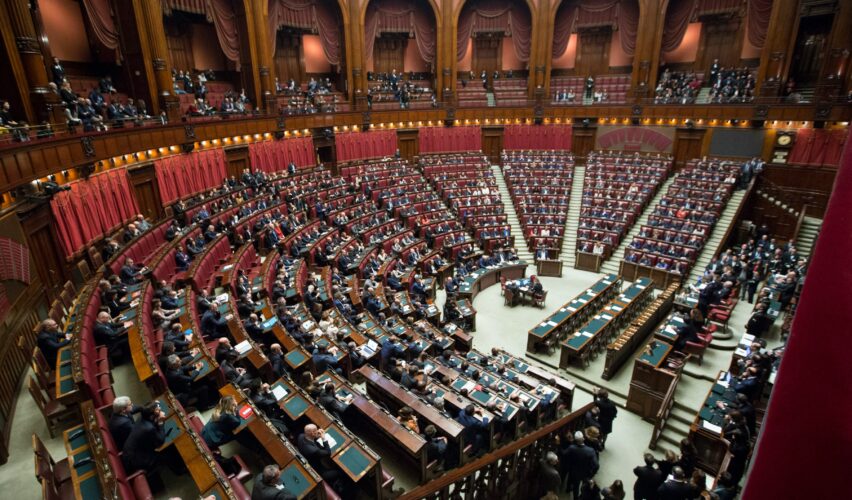The Ascendant Threat of AI-Driven Misinformation in Elections
1. Executive Summary: The Age of AI Election Interference
The intersection of artificial intelligence (AI) and politics has become a focal point of global concern, with the rapid advancement of generative AI technologies presenting an unprecedented challenge to the integrity of democratic processes. The ability of AI to swiftly and inexpensively generate vast amounts of personalized content has raised significant anxieties about its potential to create and disseminate misinformation and disinformation on an unprecedented scale, specifically aimed at manipulating electoral outcomes and shaping public opinion.
This novel threat surpasses traditional forms of political manipulation due to AI’s capacity for rapid content creation and individual targeting. As numerous national elections are scheduled worldwide, understanding and addressing the implications of AI in this context has become a matter of urgent importance.
The confluence of sophisticated AI capabilities and the inherent vulnerabilities within democratic information ecosystems has created an environment where election integrity faces a formidable new adversary. The timing of this technological surge, coinciding with a significant number of global elections, amplifies the potential for widespread disruption and a decline in public trust in democratic institutions.
2. Public Anxiety: The Fear of AI-Driven Misinformation
Public concern regarding the application of AI for spreading misinformation during political campaigns, particularly in the context of the upcoming U.S. presidential election, is notably high. Surveys indicate that approximately four out of every five adults in the United States express some level of worry about AI’s role in disseminating false information. A significant majority, with nearly identical proportions across political affiliations, report being either somewhat or highly concerned about this issue. This widespread anxiety suggests a deep-seated apprehension about the potential for AI to undermine the democratic process.
Interestingly, the level of concern appears to be linked to news consumption habits, with individuals who primarily consume news through television exhibiting a higher prevalence of worry, especially among older demographics. This suggests that media narratives play a significant role in shaping public perception of this threat.
Furthermore, direct experience with generative AI tools such as ChatGPT and DALL-E does not necessarily mitigate these concerns. In fact, individuals who reported more familiarity with AI tended to express slightly greater concern, although this finding was not statistically conclusive. This counterintuitive result indicates that public fear might be fueled more by media portrayals and a general unease surrounding the capabilities of advanced technology rather than direct interaction with it.
The bipartisan nature of this worry is evident in surveys showing similar levels of concern among both Republican and Democratic voters. This widespread anxiety, while understandable given the potential risks, could inadvertently create an environment susceptible to further manipulation by actors seeking to sow discord and undermine faith in information sources and electoral processes.
The apparent disconnect between firsthand AI experience and heightened concern implies that public perception is significantly influenced by external narratives, potentially stemming from media coverage and a general apprehension about the unknown aspects of advanced technology. This underscores the importance of responsible media reporting and public education to ensure that public anxieties are grounded in accurate information rather than sensationalism.
Key Survey Findings on Public Concern about AI Misinformation in the 2024 US Presidential Election
| Level of Concern | Percentage of Respondents |
|---|---|
| High Concern | 44.6% |
| Somewhat Concerned | 38.8% |
| No Concern | 9.5% |
| Unaware of the Issue | 7.1% |
3. Weaponizing AI: Examples of Political Manipulation
The threat of AI in political campaigns is not merely theoretical; concrete examples of its use in manipulation are already emerging globally. A prominent instance occurred during the lead-up to the New Hampshire primary when AI-generated robocalls mimicking the voice of President Biden urged voters to abstain from participating. This event served as a stark illustration of how AI can be deployed for voter suppression tactics.
The use of sophisticated AI-generated content, such as deepfakes, has also been observed in elections in other countries. During Turkey’s presidential campaign, fabricated videos depicting a candidate being endorsed by a designated terrorist group were widely circulated. Similarly, in Argentina’s presidential elections, AI-driven memetic warfare was deployed, with deepfakes used by both leading candidates to mock their opponents. These international examples underscore the global reach and adaptability of AI as a tool for political manipulation.
Furthermore, AI has been used to create entirely fabricated images and narratives within the U.S. political sphere, such as the AI-generated fake image of singer Taylor Swift endorsing a presidential candidate and misleading images depicting a candidate’s arrest. These instances highlight the potential for AI to rapidly generate and disseminate false information that can quickly gain traction and influence public perception.
There is also a significant concern that AI could exacerbate existing disparities in the targeting of disinformation, potentially disproportionately affecting demographic groups already facing barriers to political participation. Beyond influencing voters’ perceptions of candidates, AI could also be employed to undermine the administration of elections themselves. This could involve the creation of fake evidence of election misconduct, such as ballot tampering, which could further erode public trust in the integrity of the electoral process.
These examples collectively demonstrate that AI is not a future threat but an active instrument being utilized in political campaigns worldwide with the aim of manipulating voters and subverting democratic processes. The increasing sophistication and decreasing cost associated with creating AI-generated content are making this technology accessible to a broader range of actors, thereby amplifying the potential for widespread abuse.
4. The Regulatory Race: Government Efforts to Control AI’s Influence
In response to the growing concerns surrounding AI’s impact on elections, a significant regulatory race is underway at both federal and state levels in the United States. Several pieces of legislation have been introduced in the 118th Congress aiming to curb the nefarious uses of AI in elections and establish essential rules and transparency measures for the democratic process.
Notable bills such as the Protected Elections from Deceptive AI Act (HR 2770 and HR 8384) seek to prohibit the distribution of materially deceptive AI-generated media, particularly political advertisements related to federal candidates, with the goal of preventing content that misleads voters or manipulates election outcomes.
The AI Transparency in Elections Act of 2024 (HR 3875 and HR 8668) mandates that political advertisements containing AI-generated content include a clear disclaimer indicating the use of AI. The Act also establishes guidelines for monitoring and examining AI systems used in election-related activities to ensure transparency and prevent manipulation.
The Preparing Election Administrators for AI Act (S 3897 and HR 8353) requires the U.S. Election Assistance Commission to develop guidelines for assisting election officials in managing AI’s risks and applications in elections. This includes provisions for training programs, resource allocation, and the development of best practices to safeguard the electoral process against AI-driven threats.
Other proposed legislation, such as the Candidate Voice Fraud Prohibition Act (HR 4611) and the Securing Elections From AI Deception Act (HR 8858), aim to prohibit the distribution of deceptive AI-generated audio and content intended to mislead voters. The latter bill also requires the disclosure of AI use in campaign materials and tasks federal agencies with monitoring AI interference.
At the state level, many legislatures are taking action, with most state laws regulating AI based on the medium through which it is distributed, such as audio, images, and video. A notable trend is the enactment of new laws or provisions in several states to regulate the use of deepfakes in political communications.
While no state has yet implemented a complete ban on deceptive AI-generated political messaging, likely due to First Amendment considerations, many are establishing durational prohibitions and disclosure requirements. Penalties for violations can include injunctive relief, civil penalties, and, in some cases, criminal charges.
In contrast to this legislative activity, the Federal Election Commission (FEC) announced its decision not to revise existing rules to specifically regulate the use of AI in political campaign communications. Instead, the FEC opted to handle the application of current laws against fraudulent misrepresentation on a case-by-case basis, arguing that the existing statute is technology-neutral and applies to all means of accomplishing fraud, including AI-assisted media.
This decision followed significant debate and public commentary, with concerns raised about the FEC’s statutory authority and the potential First Amendment implications of specific regulations. The rapid evolution of the regulatory landscape, marked by a surge in legislative efforts at both federal and state levels, indicates a growing acknowledgment of the urgent need to address the challenges posed by AI in elections. However, the inherent tension between regulating AI to safeguard election integrity and protecting fundamental free speech rights remains a significant hurdle for policymakers.
Key Proposed Federal Legislation Regulating AI in Political Campaigns
| Bill Name | Bill Number | Focus | Status |
|---|---|---|---|
| Protected Elections from Deceptive AI Act | HR 2770, HR 8384 | Prohibits distribution of materially deceptive AI-generated media in federal elections. | Proposed |
| AI Transparency in Elections Act of 2024 | HR 3875, HR 8668 | Mandates disclaimers for AI-generated content in political ads and establishes monitoring guidelines. | Proposed |
| Preparing Election Administrators for AI Act | S 3897, HR 8353 | Requires development of guidelines for election officials to manage AI risks and applications. | Proposed |
| Candidate Voice Fraud Prohibition Act | HR 4611 | Prohibits materially deceptive AI-generated audio in political communications. | Proposed |
| Securing Elections From AI Deception Act | HR 8858 | Prohibits AI use to deprive voting rights and requires disclosure of AI use in campaign content. | Proposed |
5. Industry Response: Tech Companies on the Defensive
In light of the growing concerns about AI misuse in elections, a coalition of major technology companies has adopted a defensive strategy by signing the voluntary “Tech Accord to Combat Deceptive Use of AI in 2024 Elections.” This accord, signed by 27 prominent players such as Google, Meta, Microsoft, OpenAI, and TikTok, outlines a series of commitments focused on detecting, labeling, and addressing AI-generated misinformation aimed at deceiving voters.
The signatories have pledged to collaborate on developing and deploying technology to mitigate risks associated with deceptive AI election content, including offering open-source tools where applicable. Additionally, these companies have committed to assessing their AI models for election-related risks, detecting the spread of misleading content on their platforms, and responding effectively when such content is identified.
The accord also stresses the importance of fostering cross-industry resilience to deceptive AI election content. It promises greater transparency regarding how the companies are addressing the issue and ongoing engagement with civil society organizations and academics. Furthermore, the signatories have agreed to support public awareness campaigns, promote media literacy, and build societal resilience against AI-driven disinformation.
However, the voluntary nature of the accord raises questions about its overall effectiveness and the accountability of the signatory companies. Since there are no mandatory reporting requirements, many companies may claim to be working toward the issue without fully demonstrating follow-through on their commitments. Some companies have outlined specific actions, though. For example, Meta has announced plans to detect and label images generated by external AI services. Google and Meta also stated that they would require election advertisers to disclose when ads contain AI-generated or altered photorealistic content.
Several tech companies are also collaborating with non-profit organizations to improve the availability of accurate election information and counteract misinformation. While the industry’s recognition of the risks and its initial steps to address them are commendable, the reliance on voluntary measures highlights the challenges of content moderation. The focus on detection and labeling, rather than imposing outright bans on deceptive AI content, illustrates the difficulties in defining “deceptive” content and balancing the fight against misinformation with the protection of free expression.
The collaborative approach, involving partnerships with civil society groups and academics, signals an increasing recognition within the tech industry that addressing AI-driven election interference requires a multi-faceted effort involving diverse stakeholders.







